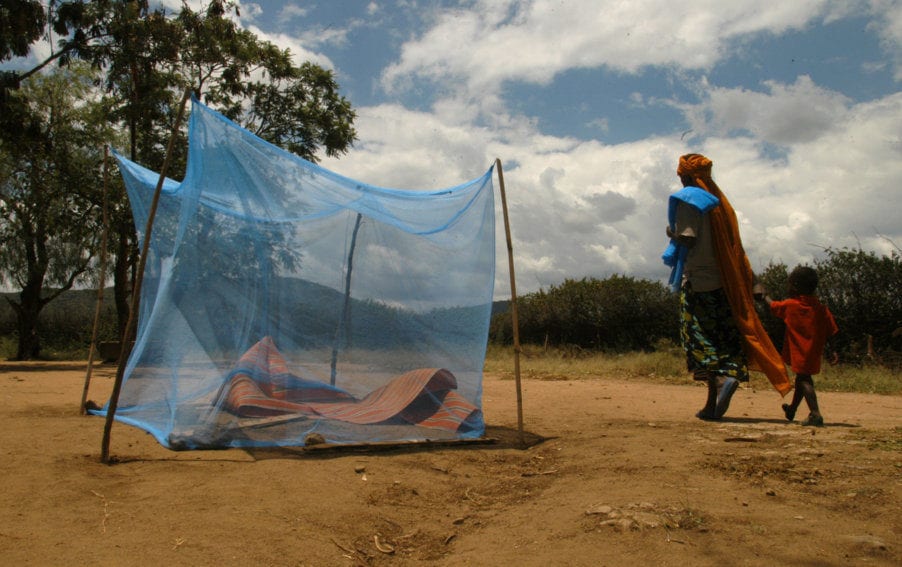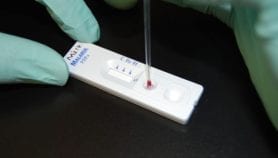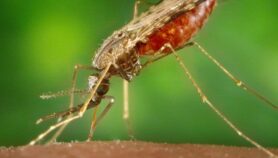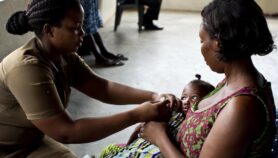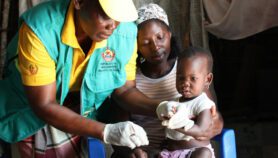Send to a friend
The details you provide on this page will not be used to send unsolicited email, and will not be sold to a 3rd party. See privacy policy.
[NAIROBI] Despite substantial decline in transmission rates of malaria in endemic African countries from 2000 to 2010, the continent is still saddled with millions of people at risk of the disease, a modelling study says.
Researchers from Kenya Medical Research Institute (KEMRI)-Wellcome Trust Programme, University of Oxford and WHO Regional Office for Africa say during the period 2000-2010 increased financing of malaria control occurred in Africa mainly through Roll Back Malaria (RBM) Partnership but evidence of impact on the disease’s transmission is lacking.
The research team geocoded data from surveys on malaria cases conducted from 1980 to 2012 in 44 African countries. They produced malaria risks maps and used modelling methods to estimate the population at risk of malaria caused by the parasite Plasmodium falciparum for the years 2000 — when the RBM Partnership started — and 2010.
“Fifty-seven per cent of African population falls within the quadrant of moderate- to high-risk areas, meaning greater interventions [are] still needed to ensure desired efficacy in wiping out malaria.”
Abdisalan Noor, KEMRI-Wellcome Trust Research Programme, Kenya
The study co-led by Abdisalan Noor of the KEMRI-Wellcome Trust Research Programme in Kenya and Robert Snow of the UK-based University of Oxford estimated that 34.4 per cent of 635·7 million people in the countries were at risk of malaria in 2000. But in 2010, the risk reduced to 22.5 per cent of 815.7 million people — representing 183.5 million individuals.
“Fifty-seven per cent of African population falls within the quadrant of moderate- to high-risk areas, meaning greater interventions [are] still needed to ensure desired efficacy in wiping out malaria,” says Noor. “Improved delivery methods are still needed in large areas of Sub-Saharan Africa before malaria transmission can be reduced to the level at which elimination becomes a credible prospect.”
The study, published in The Lancet last week (20 February), also showed that in 2010 about 87 per cent of the 183.5 million people were in only ten countries, namely Burkina Faso, Côte d’Ivoire, Democratic Republic of Congo, Ghana, Guinea, Mali, Mozambique, Nigeria, Togo and Uganda.
Noor says to ensure accuracy of their research they used studies that had laboratory-confirmed malaria cases.
He adds that the main challenge they faced with the mapping and modelling was poor malaria data in some countries, which resulted in the team focusing on only 44 African countries.
According to the 2011 World Health Report, more than US$5 billion will be needed to control malaria worldwide. Noor adds that such funding, if available, could help sustain the gains that have been made in Africa and accelerate the reduction in transmission intensity where it still remains high.
Willis Akhwale, head, Department of Disease Prevention and Control at Ministry of Public Health, Kenya, says that more funds are needed, especially for high risk areas to help reduce the chances of people getting the disease.
“Interventions such as bed nets, mosquito sprays, medicines and environmental management are part of the measures that need to be put in place to ensure effective control of this disease,” says Akhwale.
Akhwale adds that emphasis should be on health education to curb habits that encourage mosquito breeding.
Link to full paper in The Lancet*
Free registration is required to view this article.
This article has been produced by SciDev.Net's Sub-Saharan Africa desk.
References
The Lancet doi 10.1016/S0140-6736(13)62566-0 (2014)


